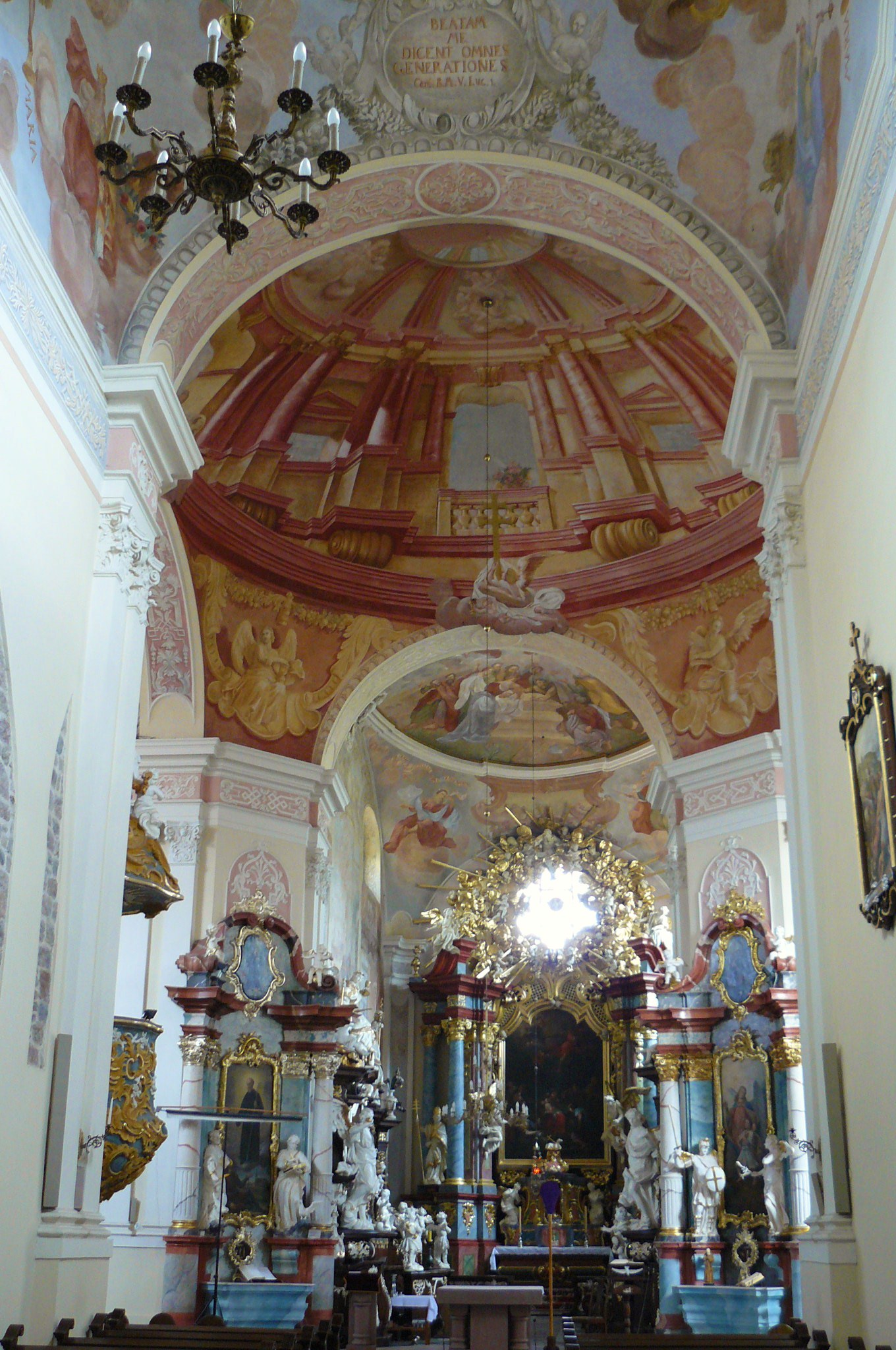Lubiń, Kościan County on:
[Wikipedia]
[Google]
[Amazon]
Lubiń is a
 Lubiń is the site of the Church of the Nativity of the Blessed Virgin Mary. The present structure dates from the 18th century but rests on 12th century Romanesque foundations, and other Gothic structural elements. A number of
Lubiń is the site of the Church of the Nativity of the Blessed Virgin Mary. The present structure dates from the 18th century but rests on 12th century Romanesque foundations, and other Gothic structural elements. A number of
village
A village is a clustered human settlement or community, larger than a hamlet but smaller than a town (although the word is often used to describe both hamlets and smaller towns), with a population typically ranging from a few hundred ...
in the administrative district of Gmina Krzywiń __NOTOC__
Gmina Krzywiń is an urban-rural gmina (administrative district) in Kościan County, Greater Poland Voivodeship, in west-central Poland. Its seat is the town of Krzywiń, which lies approximately south-east of Kościan and south of the ...
, within Kościan County
__NOTOC__
Kościan County ( pl, powiat kościański) is a unit of territorial administration and local government (powiat) in Greater Poland Voivodeship, west-central Poland. It came into being on January 1, 1999, as a result of the Polish local go ...
, Greater Poland Voivodeship
Greater Poland Voivodeship ( pl, Województwo wielkopolskie; ), also known as Wielkopolska Voivodeship, Wielkopolska Province, or Greater Poland Province, is a voivodeship, or province, in west-central Poland. It was created on 1 January 1999 ...
, in west-central Poland. It lies approximately east of Krzywiń
Krzywiń (german: Kriewen) is a town in west-central Poland in the Kościan County, Greater Poland Voivodeship, located at the Obra canal.
History
Krzywiń was first referred to in scripts as ''Crivin'' in 1181. But it was not until 1237 that ...
, south-east of Kościan
Kościan (german: Kosten) is a town on the Obra canal in west-central Poland, with a population of 23 952 inhabitants as of June 2014. Situated in the Greater Poland Voivodeship (since 1999), previously in Leszno Voivodeship (1975–1998), it i ...
, and south of the regional capital Poznań
Poznań () is a city on the River Warta in west-central Poland, within the Greater Poland region. The city is an important cultural and business centre, and one of Poland's most populous regions with many regional customs such as Saint Joh ...
.
Church of the Nativity of the Blessed Virgin Mary
sarcophagi
A sarcophagus (plural sarcophagi or sarcophaguses) is a box-like funeral receptacle for a corpse, most commonly carved in stone, and usually displayed above ground, though it may also be buried. The word ''sarcophagus'' comes from the Greek ...
are incorporated in the nave and nave chapel, notably the tombs of Władysław III Spindleshanks : ''This article refers to the 12th-century Polish monarch. For the 15th-century Jagiellon monarch, see Władysław III of Poland, and for other monarchs with similar names see Ladislaus III (disambiguation)''.
Władysław III Spindleshanks ( pl, W ...
and the abbot Bernard Wąbrzeźno. The Baroque decor includes stalls with integrated work by Jan Jerzy Urbański.
The church is one of Poland's official national Historic Monuments as designated December 12, 2009, and tracked by the National Heritage Board of Poland
The National Institute of Cultural Heritage of Poland ( pl, Narodowy Instytut Dziedzictwa NID) is a Polish governmental institution responsible for documenting cultural property and the intangible cultural heritage, as well as for supporting and ...
.
References
Villages in Kościan County {{Kościan-geo-stub